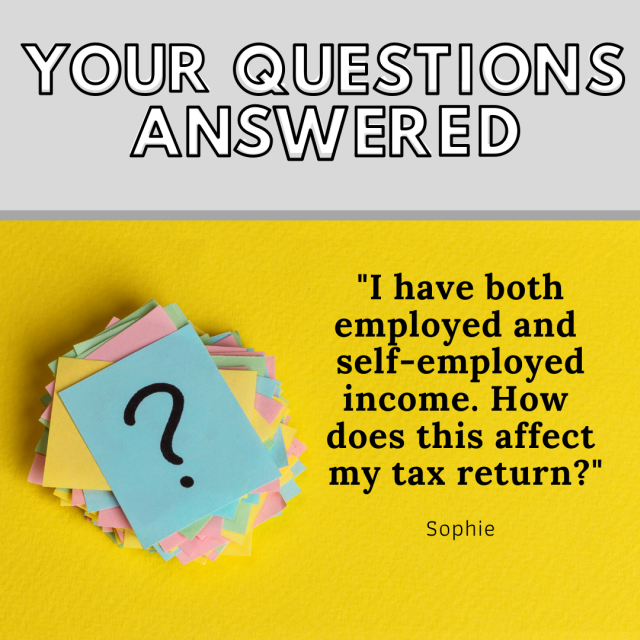Your Questions Answered: I have both employed and self-employed income. How does this affect my tax return?
 Most of us in the creative arts have a mixture of both employed and self-employed income throughout our careers. Sophie is asking how it affects her tax return.
Most of us in the creative arts have a mixture of both employed and self-employed income throughout our careers. Sophie is asking how it affects her tax return.
Sophie asked:
I saw a lovely lady called Joanna offering tax stress help!! I didn’t work freelance a lot in 19/20 tax year, so don’t have too much to submit. The thing I’m stuck on is that I worked in retail alongside, which was PAYE, so obviously have been paying tax through that employed job. Should I be on a different tax code or something because I have employed and self-employed income for my tax return? I am most confused and the HMRC website is a minefield of big words.
Couldn’t agree more Sophie! The HMRC website has felt very overwhelming to me on occasion too, believe me!
The truth is, as always, if you’ve been recording your income and expenses as you go, your tax return needn’t be very complicated even if you've got a mixture of employed and self-employed income. A new tax code is unlikely to be required.
When it comes to completing your self-assessment tax return, the ‘Tailor your Return’ section asks you to select how many employed jobs you’ve had, if any (so by what Sophie has said, she would select 1 – being her retail job), and how many self-employed businesses you have (which would be 1 - you’re self-employed performing job).
Then you go through your return and fill in your income and deductions information from your employed job(s). This information is found on either your P60 or P45. Every employer you’ve had during the tax year is required to give you one of these two. You’ll receive a P60 if you’re still employed by them at the end of the tax year (5th April) or you’ll get a P45 from them when you leave their employment during the tax year.
This information may already be filled in for you, as it is your employer's responsibility to report the income they've paid you and any deductions (like Income tax and N.I.) already taken from this income, to HMRC. Still, it’s always a good idea to cross-reference them of course!
Then, when you get to your self-employed income section, you input your total amount of self-employed income for the tax year (one figure) and your total allowable business expenses (one figure) - that’s it! The rest of the return is a lot of scrolling down, ensuring it doesn’t apply to you and clicking 'Save and continue'.
HMRC will then calculate whether you owe any additional tax or are owed a rebate (having already paid more tax than you owe for the year), based on your employed income and your self-employed profit (income less allowable business expenses).
In short, don't worry if any of that didn't make sense. Just complete your tax return and HMRC will make sure you have paid the right amount of tax.
Thanks for getting in touch and happy tax returning! Remember we've got a step-by-step guide for completing your tax return!
If you’ve got a question we haven’t covered on the site already, our just ask and we’ll get back to you. Thanks again Sophie!
SansDrama is here to help YOU and everyone else in our amazing creative community. If you've found the site helpful then you can help us to keep this site free to use forever by using the SD Web App.
Love Jo and James x